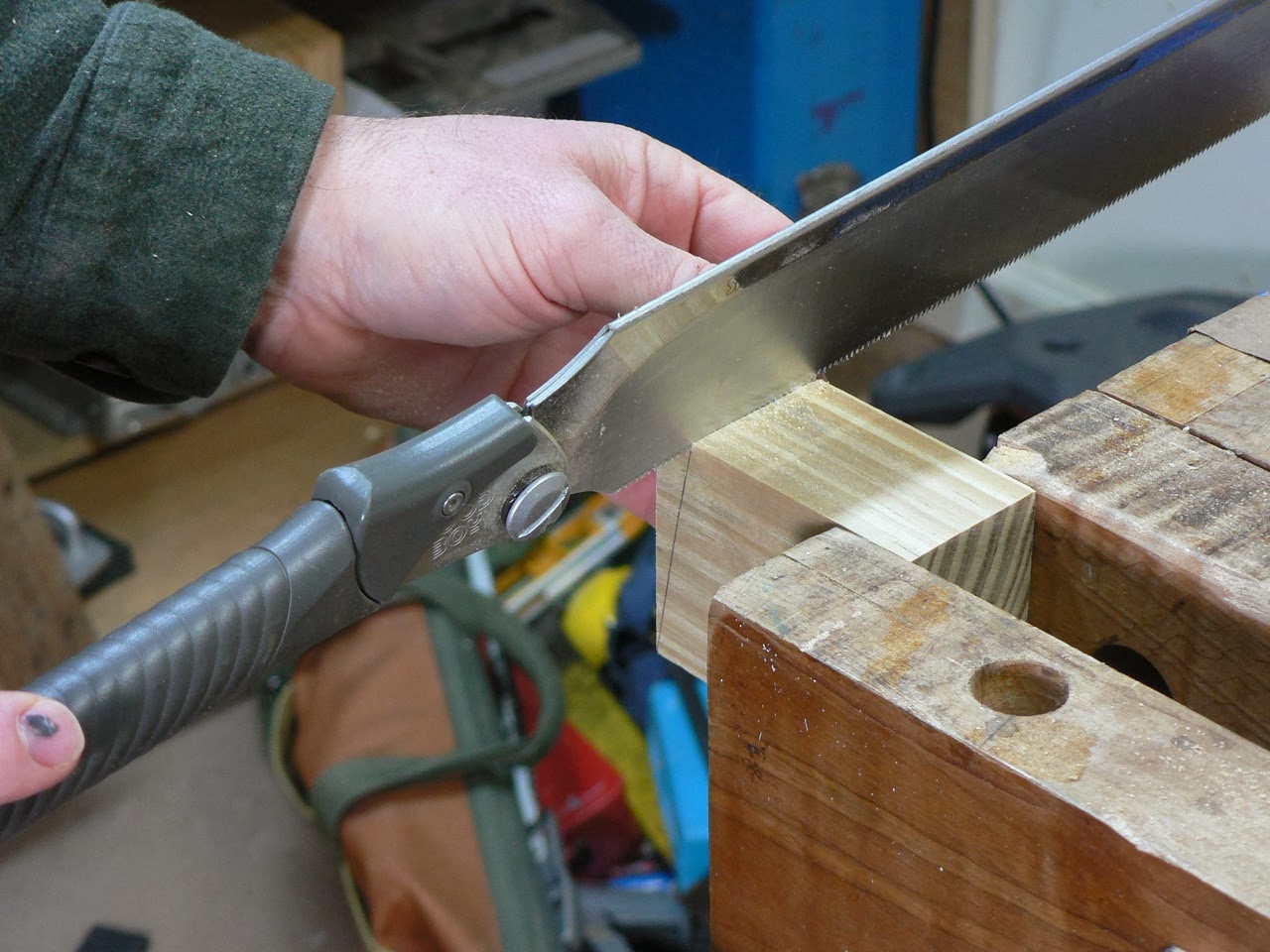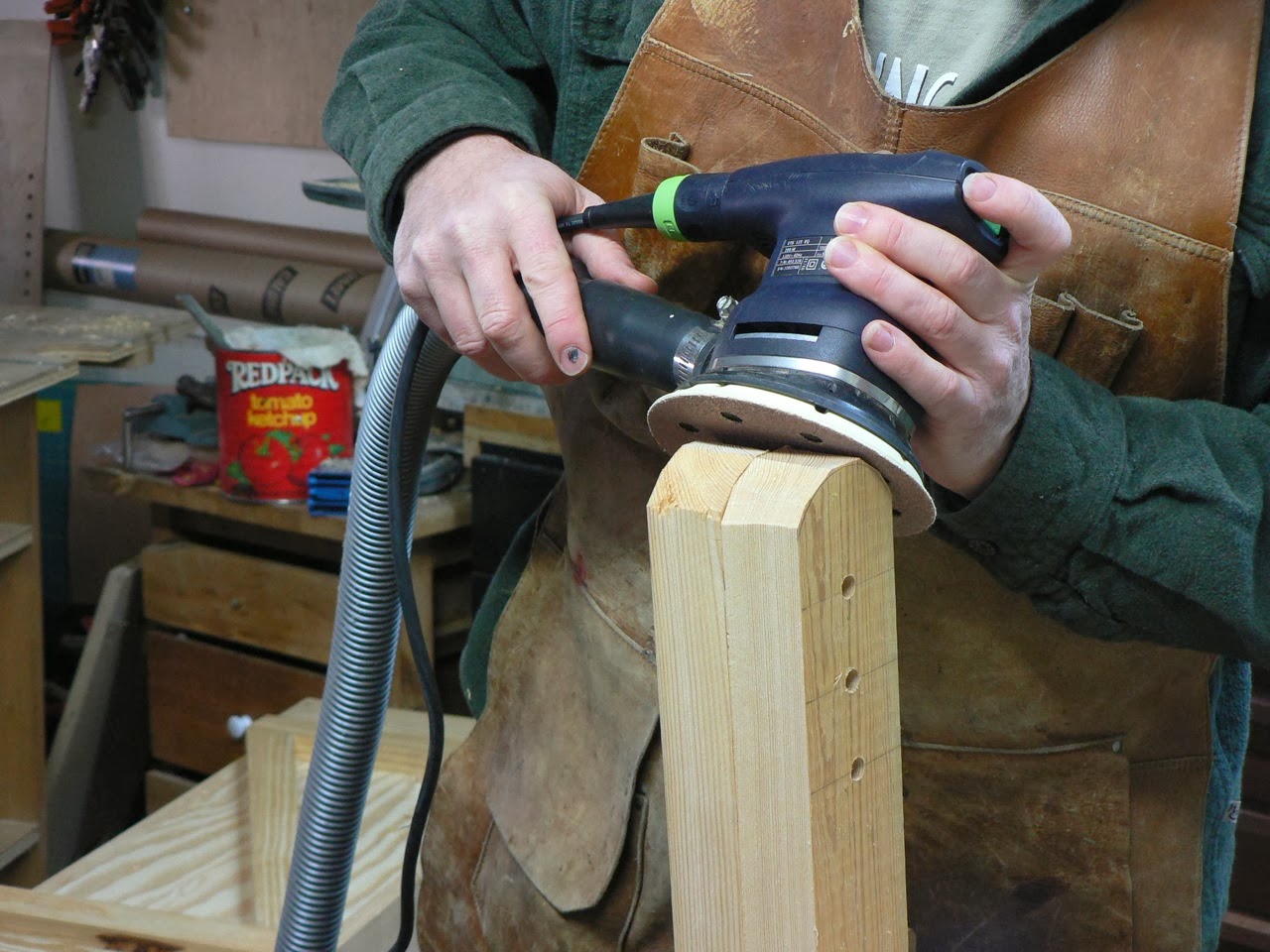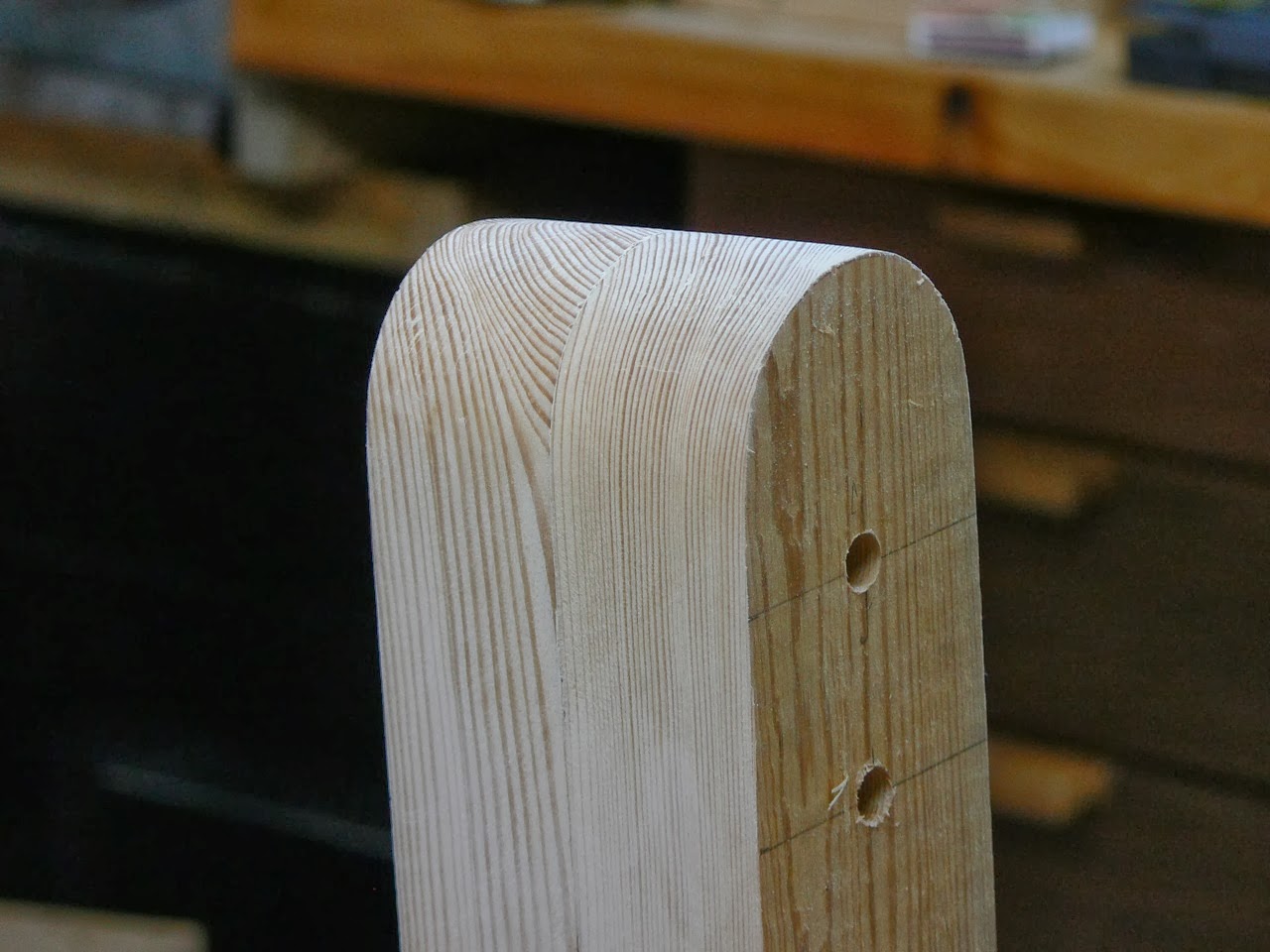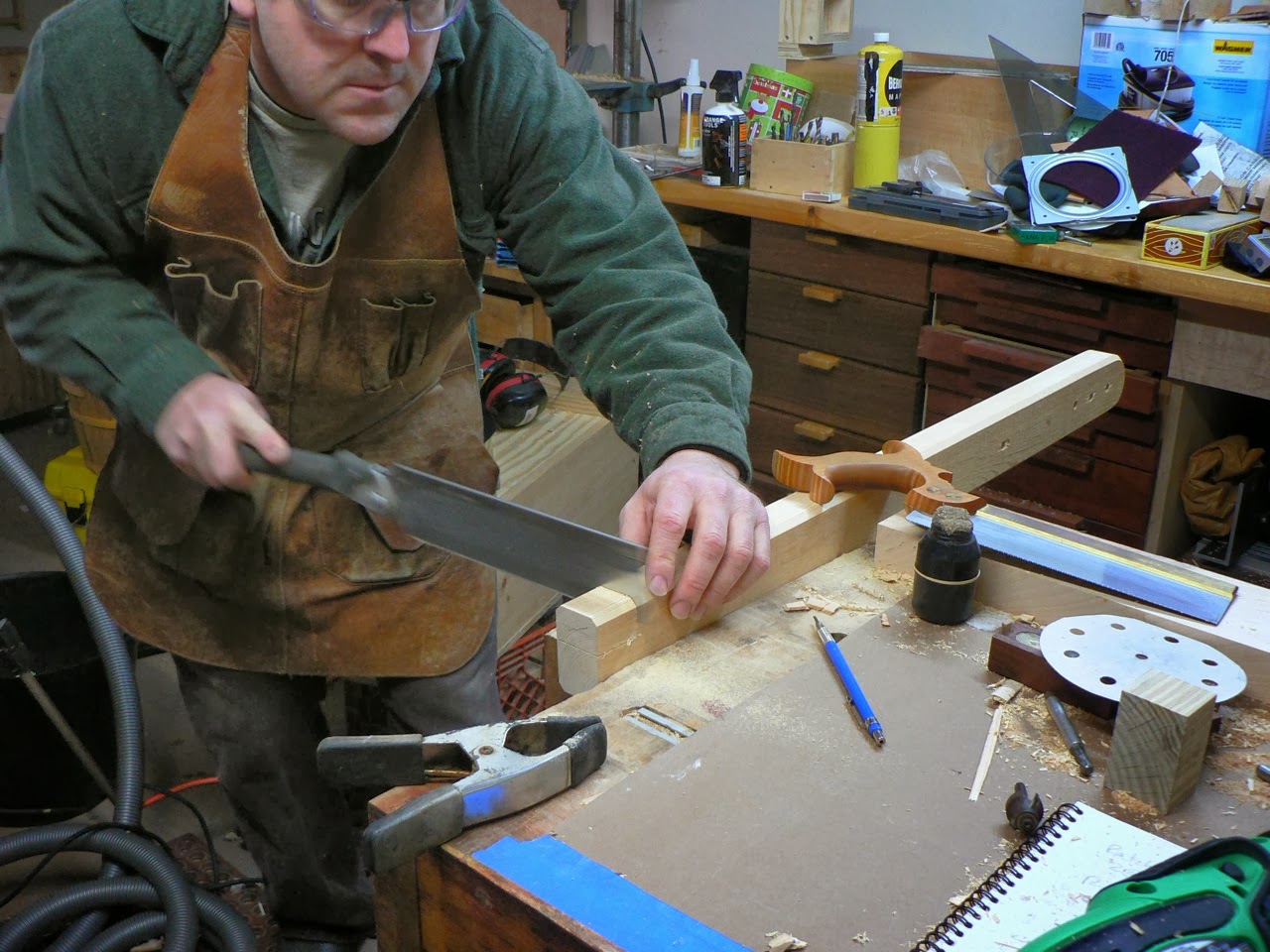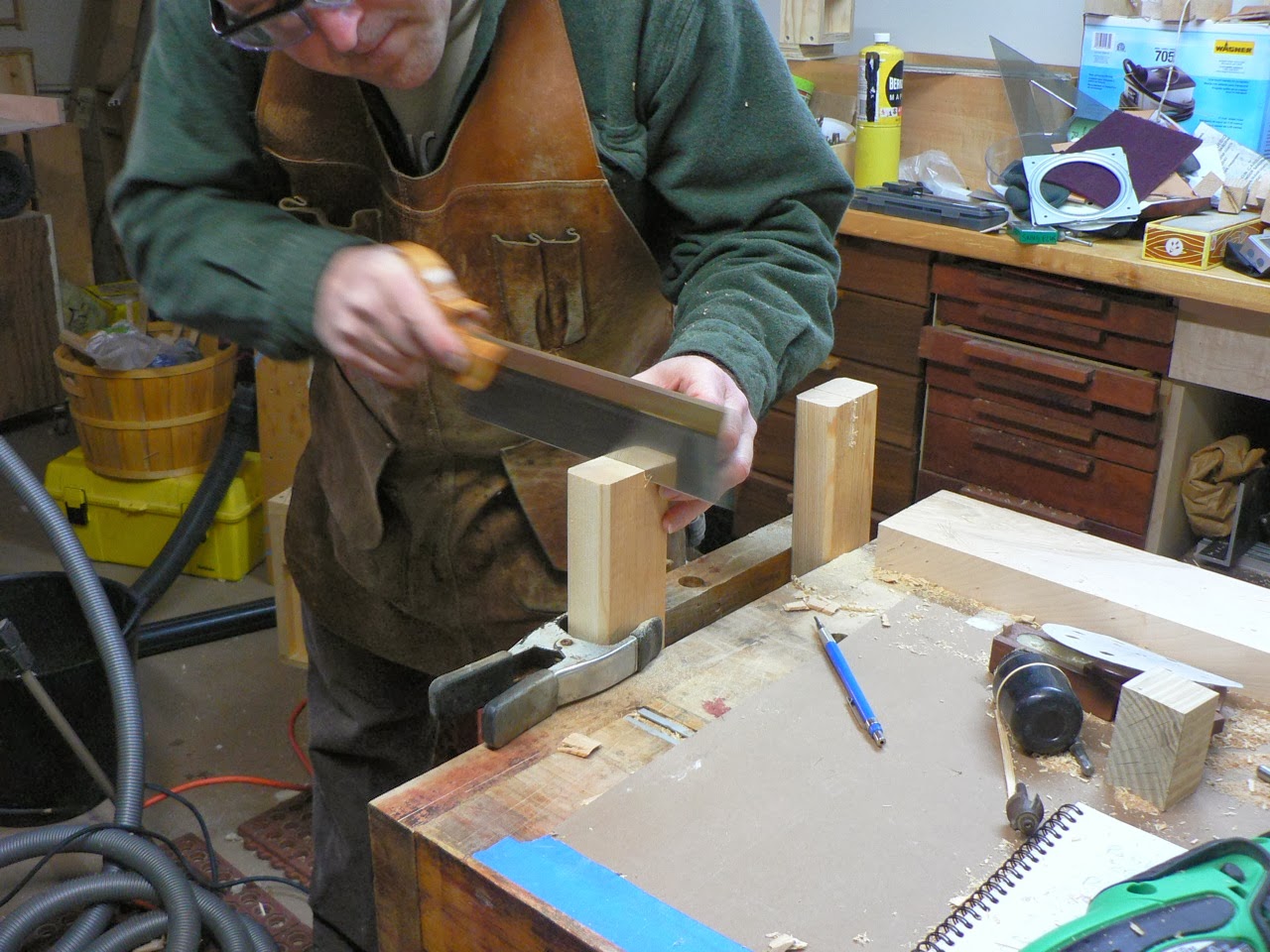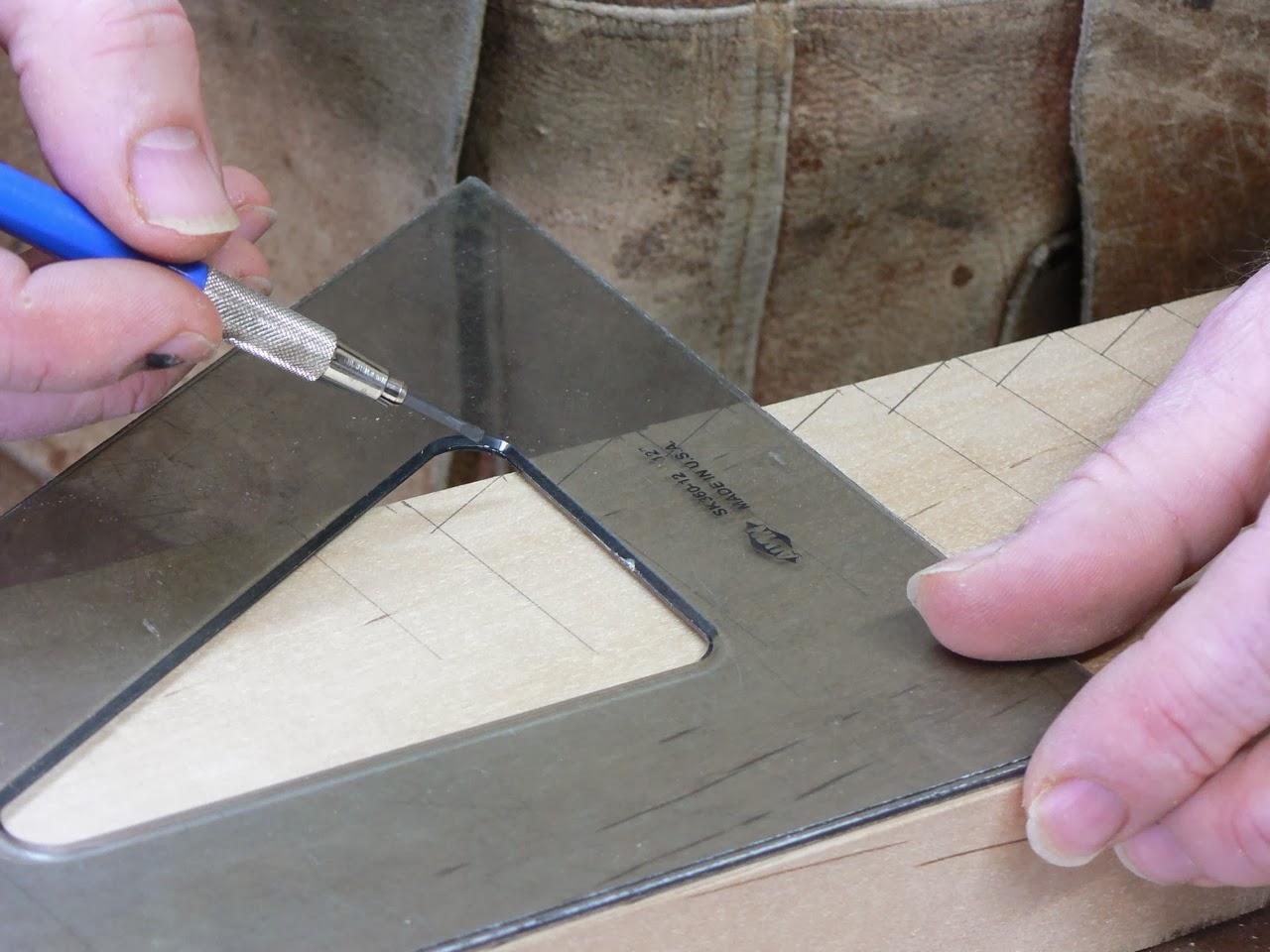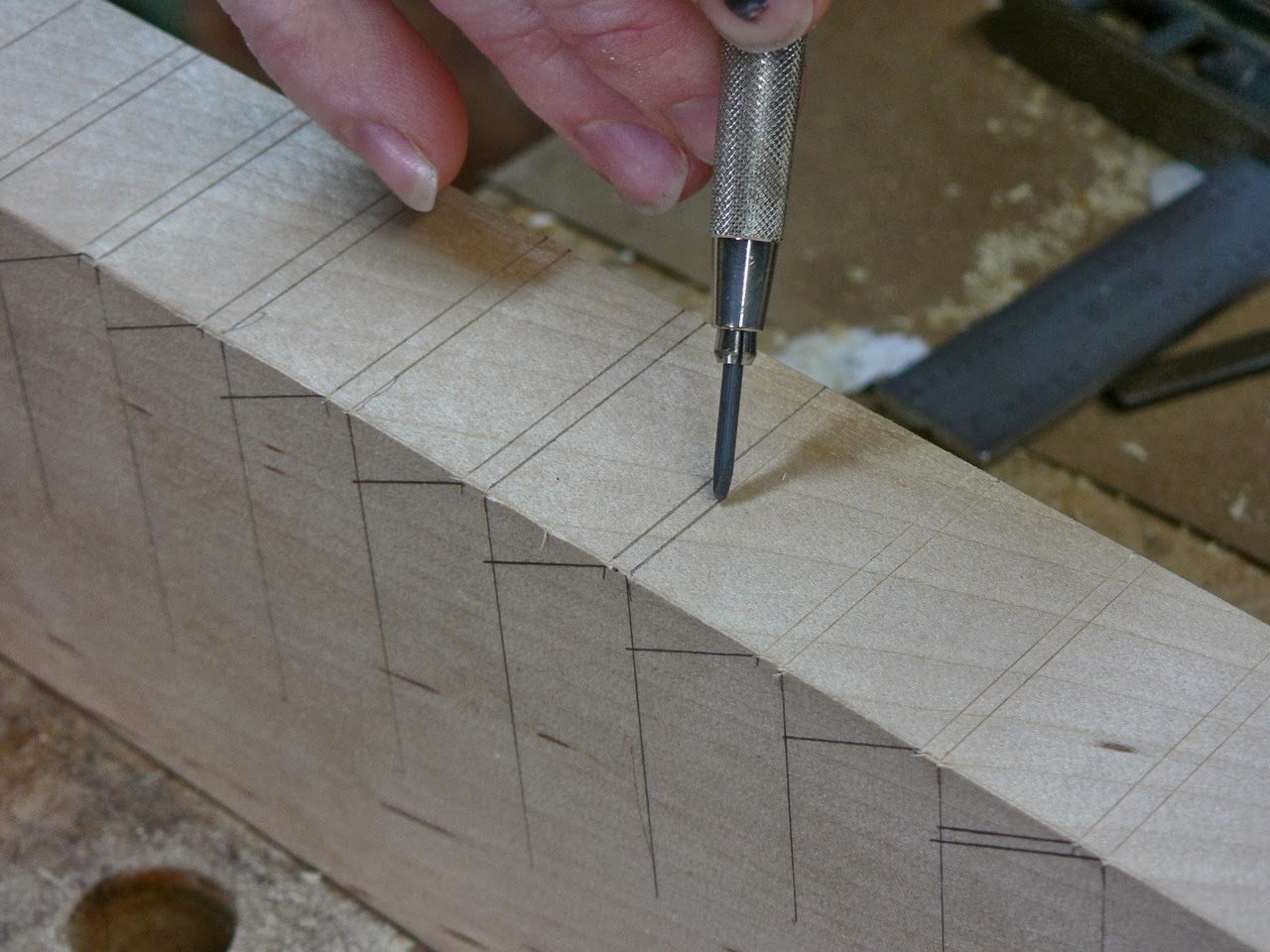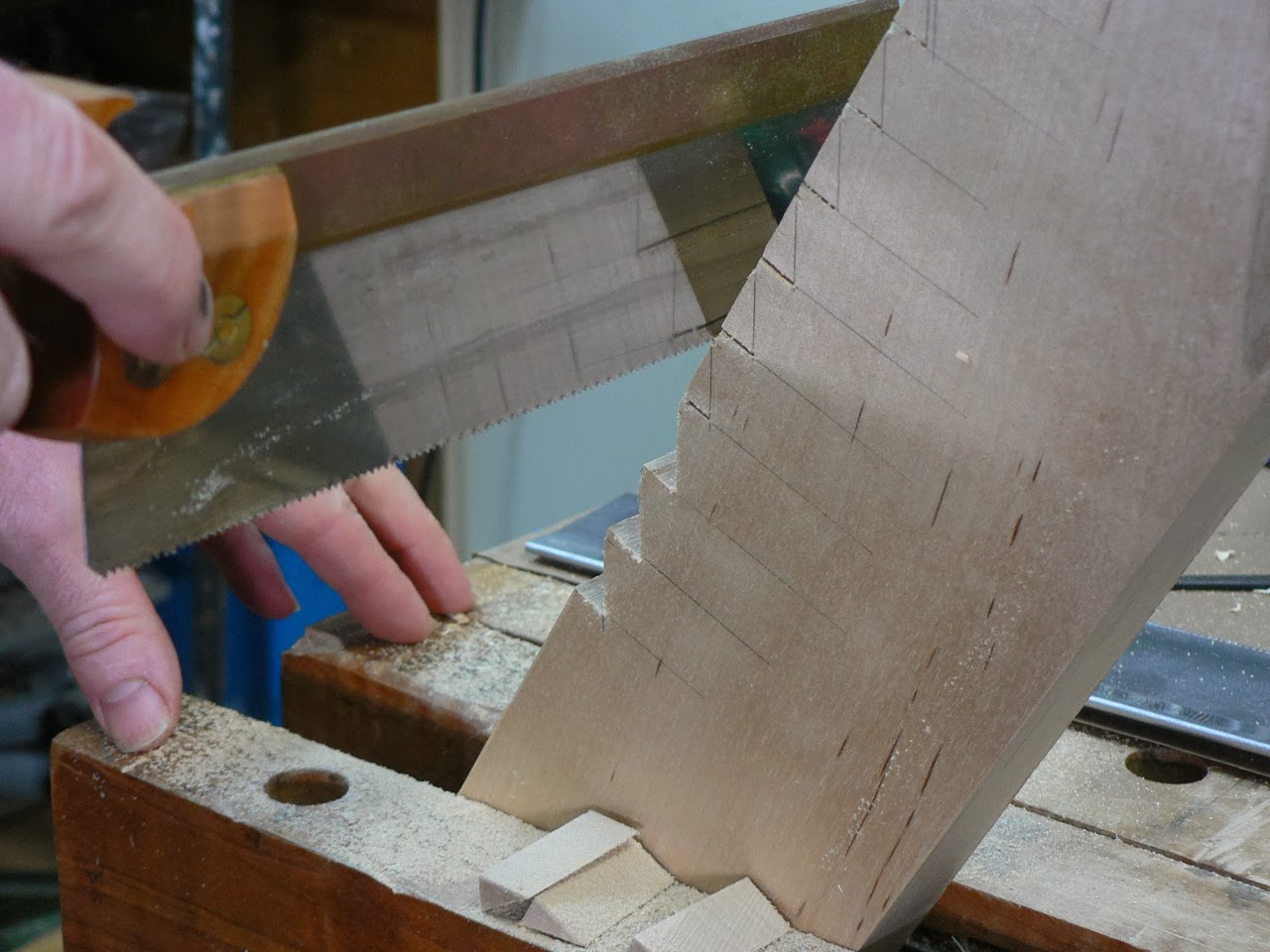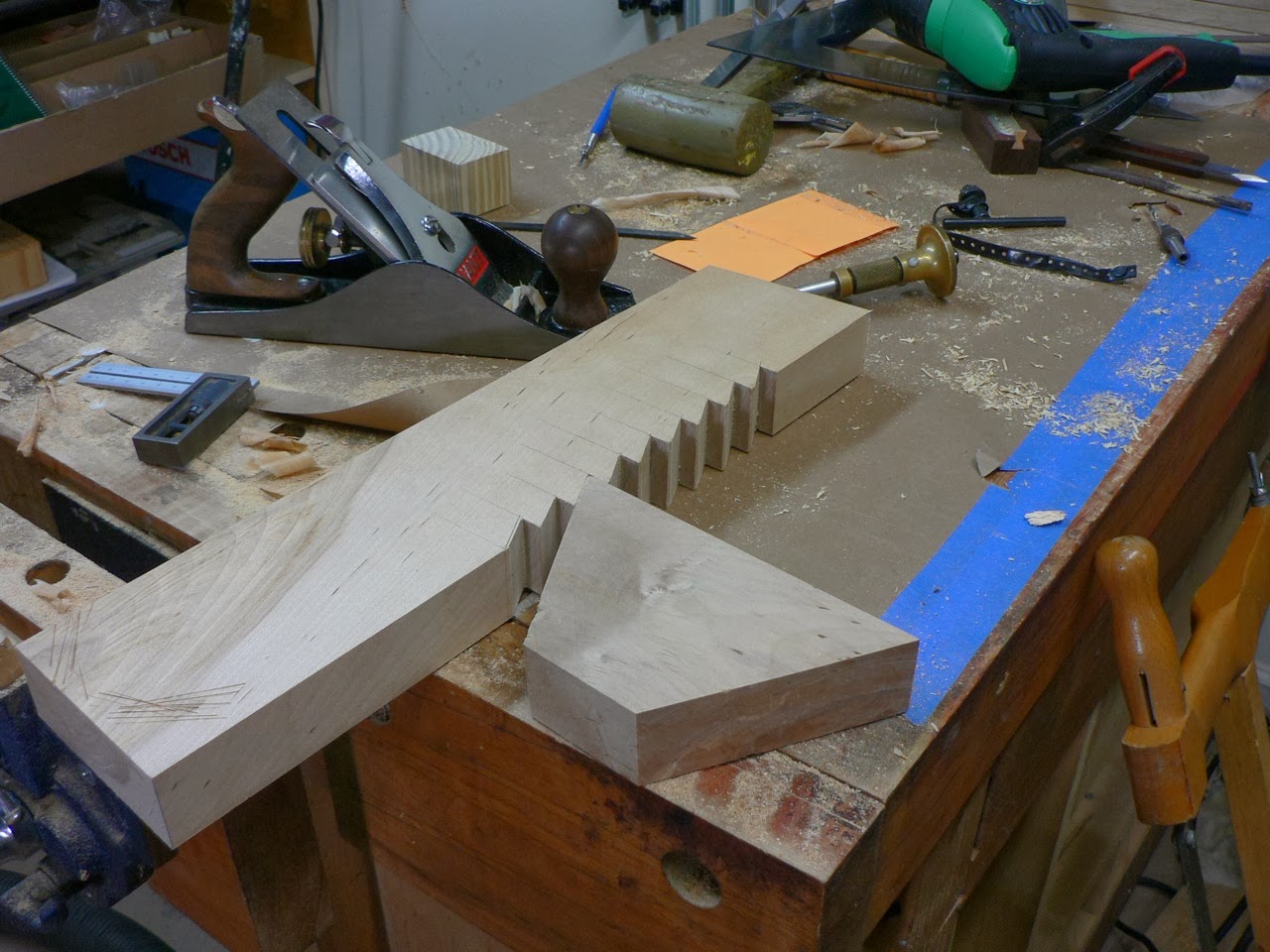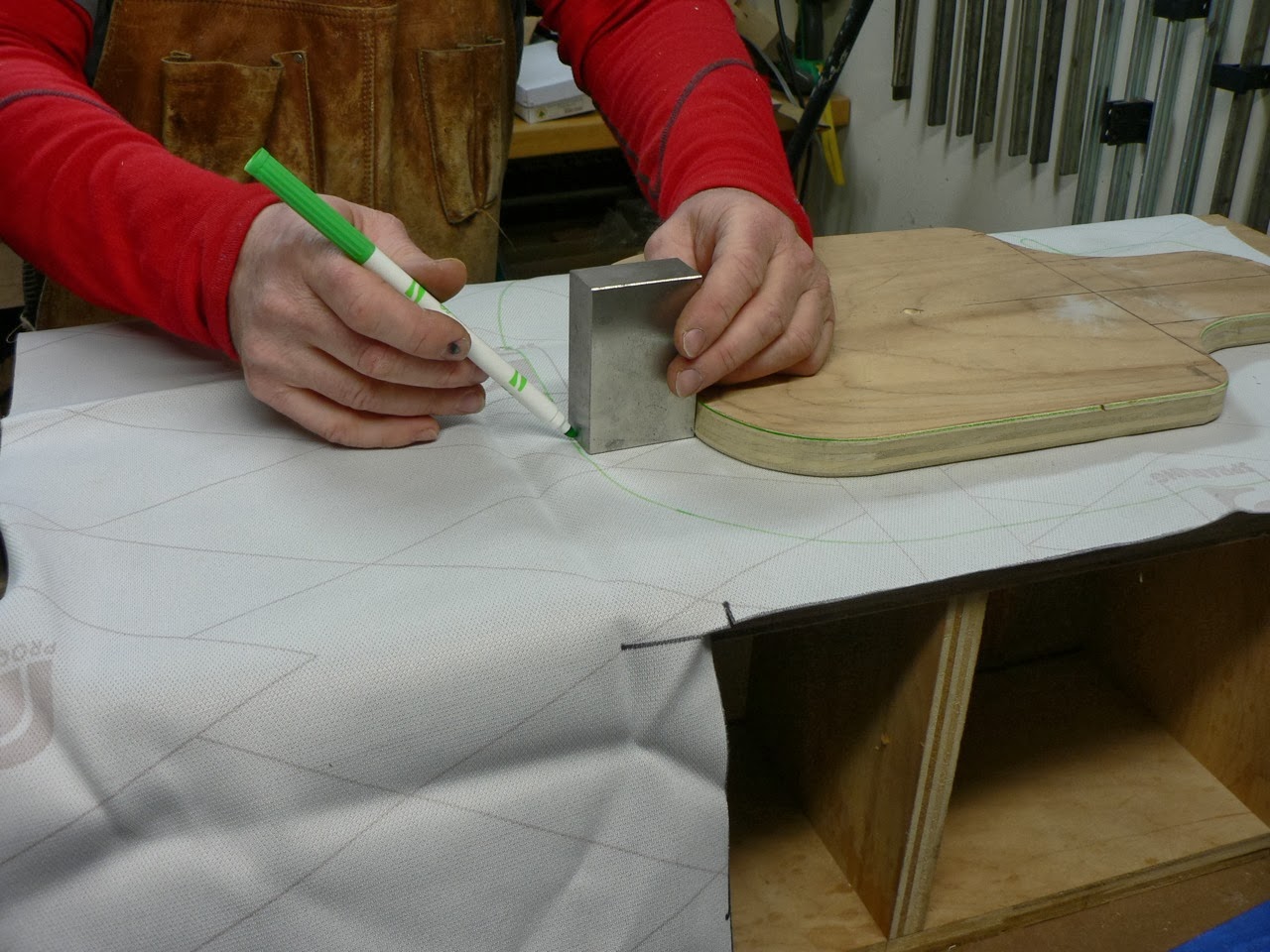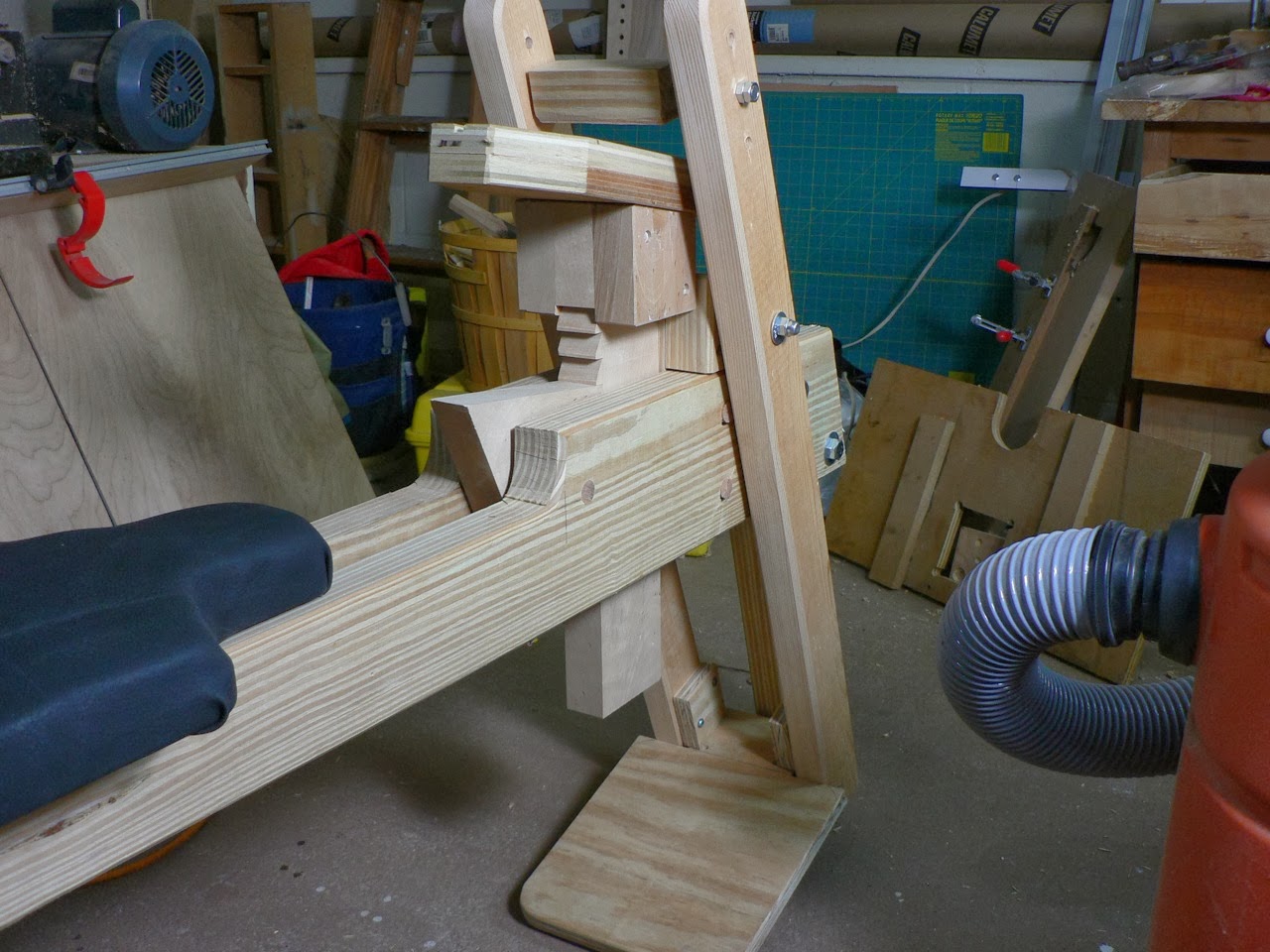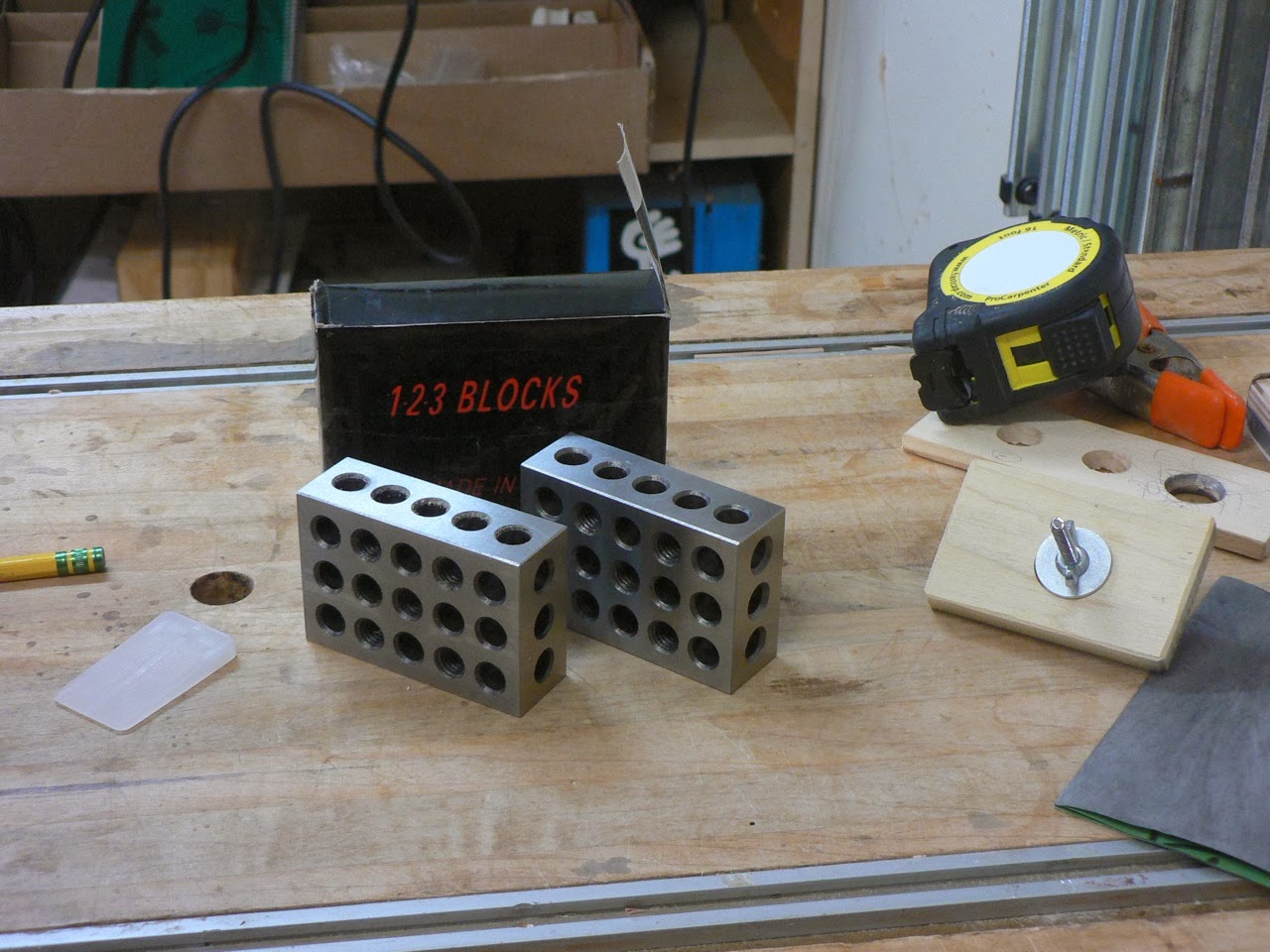One
way to make your woodworking stand out is to invest some time in
learning new finishing techniques. Ebonizing by the method I describe
here is a great addition to the thousand-dollar shop, because it
requires no special equipment or tools other than the plastic cups,
gloves, rags, etc. you already have on hand.
2014-01-29
2014-01-25
#SSBO (Shop Stool Build-Off)
Howdy!
A couple of months ago a few woodworkers I follow via their blogs and Twitter started the idea of having a "build-off" where woodworkers simultaneously build their own version of some specified project, and live blog about it. I was hesitant to join in, because some of these people have MAD skillz. On the other hand, the project they settled on is a shop stool, and I had just realized I need a comfy place to sit in the shop, so I signed on.
The other week, I was starting to resent the time commitment. My weekends are precious to me, and I might rather have the unstructured time. But then on Thursday, it hit me in a flash: if my shop stool could be really, really useful to me, as well as comfortable, even if it doesn't look like what the other guys are making, why not?
So I'm re-committed to doing this. I will have a shop stool by the end of the weekend, win, lose, or draw. The design I settled on doesn't look like what you probably imagine when you think "shop stool," but it has three legs, is very comfortable as seating, and definitely belongs in the shop! I'll post pictures here as I take them, every few hours starting about 7pm tonight, and if you want to follow live, as well as keep track of the other contestants' progress, follow along on Twitter, where my handle is @JimDillon6 and the hashtag for this weekend's event is #SSBO. If you really get into it, Chris Wong, one of the main organizers, has a web page listing all the participants as well as links for following each of them. Here it is: http://flairwoodworks.com/2014/01/23/shop-stool-build-off-participants/
Laying out ratchet teeth for the height adjusting mechanism.
I scribed a baseline on the back face of the ratchet to let me know when to stop sawing.
Another form of hybrid woodworking: by coincidence, my best fine crosscutting saw is Japanese, and my best fine ripping saw is Western. So they're often found side by side on my bench.
Here's as far as I got on Saturday night. I had to take about 7 hours off to drive my son to social engagements and kendo, then after dinner I got back into the shop. I'm hopeful that tomorrow I can finish fabricating one or two more parts, chamfer all the exposed corners, and put the seat in place. Stay tuned!
The height adjuster needs to have a large top to support its load.
Yet another use for 1-2-3 blocks: tracing the seat profile onto the backing of some black naugahyde with a uniform 2" margin to allow room for the padding and to keep all the staples on the bottom, out of sight.
Once the seat was upholstered, I was ready for assembly:
Surprise! My shop stool does double duty as a shaving horse!
You'll be seeing this shop stool in future blog posts - - I expect to spend lots of time on that seat in the months to come. Stay tuned!
I finished at 6:15 Sunday. My son Carl and my partner Margaret and I went out for pizza, then came home and checked out the other stools on Twitter and the sites of the various makers. I strongly encourage you to check them out via Chris Wong's page linked to above, or by going on Twitter and scrolling back through the "#SSBO" tweets. This weekend was really wonderful for me - - taking part in something happening all over the English-speaking world, seeing all the varied designs people came up with, and making friends with people I've never met IRL. Good stuff! If you ever get a chance to participate in one of these build-offs, do it!
A couple of months ago a few woodworkers I follow via their blogs and Twitter started the idea of having a "build-off" where woodworkers simultaneously build their own version of some specified project, and live blog about it. I was hesitant to join in, because some of these people have MAD skillz. On the other hand, the project they settled on is a shop stool, and I had just realized I need a comfy place to sit in the shop, so I signed on.
The other week, I was starting to resent the time commitment. My weekends are precious to me, and I might rather have the unstructured time. But then on Thursday, it hit me in a flash: if my shop stool could be really, really useful to me, as well as comfortable, even if it doesn't look like what the other guys are making, why not?
So I'm re-committed to doing this. I will have a shop stool by the end of the weekend, win, lose, or draw. The design I settled on doesn't look like what you probably imagine when you think "shop stool," but it has three legs, is very comfortable as seating, and definitely belongs in the shop! I'll post pictures here as I take them, every few hours starting about 7pm tonight, and if you want to follow live, as well as keep track of the other contestants' progress, follow along on Twitter, where my handle is @JimDillon6 and the hashtag for this weekend's event is #SSBO. If you really get into it, Chris Wong, one of the main organizers, has a web page listing all the participants as well as links for following each of them. Here it is: http://flairwoodworks.com/2014/01/23/shop-stool-build-off-participants/
The above three photos show a crude method of putting a half-round profile on the end of a stick, in this case part of the stool's adjustable workholding mechanism. After tracing the curve I wanted on each piece, I quickly chopped back almost to the line with a chisel, then clamped the two workpieces together in the vise and sanded the curves fair with the R.O.S., working quickly through grits 40 through 150. It struck me as a good example of what the Wood Whisperer calls "hybrid woodworking" so I tweeted him to that effect. He seemed to agree.
Laying out ratchet teeth for the height adjusting mechanism.
I scribed a baseline on the back face of the ratchet to let me know when to stop sawing.
Another form of hybrid woodworking: by coincidence, my best fine crosscutting saw is Japanese, and my best fine ripping saw is Western. So they're often found side by side on my bench.
Here's as far as I got on Saturday night. I had to take about 7 hours off to drive my son to social engagements and kendo, then after dinner I got back into the shop. I'm hopeful that tomorrow I can finish fabricating one or two more parts, chamfer all the exposed corners, and put the seat in place. Stay tuned!
The height adjuster needs to have a large top to support its load.
Yet another use for 1-2-3 blocks: tracing the seat profile onto the backing of some black naugahyde with a uniform 2" margin to allow room for the padding and to keep all the staples on the bottom, out of sight.
Once the seat was upholstered, I was ready for assembly:
Surprise! My shop stool does double duty as a shaving horse!
You'll be seeing this shop stool in future blog posts - - I expect to spend lots of time on that seat in the months to come. Stay tuned!
I finished at 6:15 Sunday. My son Carl and my partner Margaret and I went out for pizza, then came home and checked out the other stools on Twitter and the sites of the various makers. I strongly encourage you to check them out via Chris Wong's page linked to above, or by going on Twitter and scrolling back through the "#SSBO" tweets. This weekend was really wonderful for me - - taking part in something happening all over the English-speaking world, seeing all the varied designs people came up with, and making friends with people I've never met IRL. Good stuff! If you ever get a chance to participate in one of these build-offs, do it!
2014-01-11
Another Use for 1-2-3 Blocks
I
improvised a scribing tool out of a 1-2-3 block, an eye screw, and a
pencil yesterday. It's not ground breaking, but it's a nice piece of
frugality making use of something I've recommended you buy back in
this earlier post. Make the tool or not; notice the method for
stopping your chairs from rocking shown in the final photos.
2014-01-07
Practice for Cutting Dovetails
If I
were the type to make New Year's resolutions, I might resolve that
2014 is the year I take my hand tool skills to a new level (To
clarify: I'm not the type, so I'm not resolving that!)
2014-01-02
Repair Damaged Wood with Steam from Clothes Iron
Accidents
happen. A case of (literal) butterfingers could make you lose grip on
your recipe box and ding the edge of the kitchen table. A perfectly
respectable man can inadvertently drop one of the kitchen chairs
while moving it up to the bedroom. Maybe you came in from the garage
carrying a cinder block and needed to set it down quickly, not
realizing until you picked it up again that in doing so you laid it
on the end of the dog's leash, and now your wood floor has the
perfect impression of a snap swivel right in front of the coat
closet.
One
approach to such mishaps is to say “Thank you! My furniture (or
house) now has more patina!” Your wabi-sabi outlook on life might
lead you to take this attitude, and if so that's fine. I go that way
myself, quite often.
But
right now, I'm making a chair, and it hasn't even had a chance to be
a new chair yet, so I was dismayed to take the rear legs out of the
bending jig after I steam-bent them to see this:
How
did this happen? The bending jig is made of yellow pine, and its grain embossed itself onto the chair legs while they were
clamped into the jig. Soon you will see a post on “Appropriate
Bending Jig Materials” perhaps . . . meantime, I don't want to make
two new chair legs. What to do? Bondo? That's a lot of
work, and I didn't plan on painting this chair.
So I
borrowed a clothes iron, got a clean rag sopping wet, and pressed the
rag into the dent with the hot iron:
Subscribe to:
Posts (Atom)

